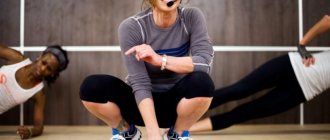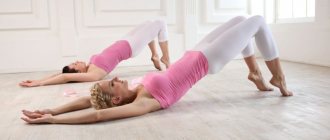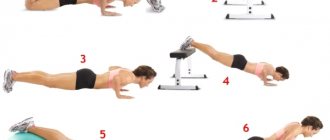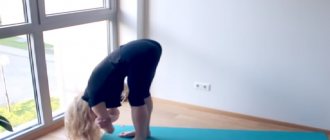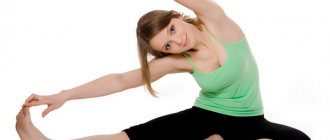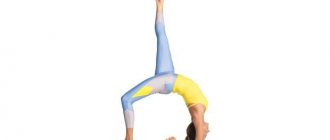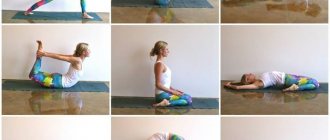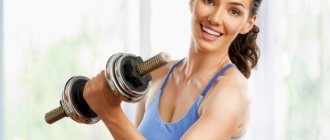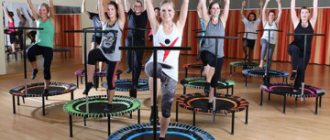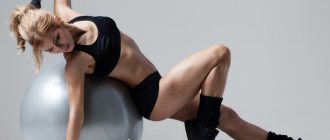Special training complexes were specially developed and thought out for those who have received certain injuries. Particular emphasis was placed on athletes and dancers who could be injured due to their activities. They were supposed to help them rehabilitate and they were called pilates.
Pilates is a special set of exercises that was first introduced in 1920 by D. Pilates. In subsequent years, this direction gained great popularity, and today in America there are more than 11 thousand instructors teaching it. Today, this direction is actively used not only by those who have suffered certain injuries. Pilates helps you get a slim figure, tone your muscles and restore your figure to slenderness. It is one of the most popular and in demand types of occupations nowadays. These exercises help develop and strengthen muscles and improve health. When exercising, you must use your breathing correctly and control your abdominal muscles.
What is Pilates
When doing Pilates, a person should do, if not the maximum number of repetitions, but at least correctly. All movements are carried out in a given order and gradually replace each other. The workout occurs at a smooth pace, and muscle tension will be felt in every exercise. Thanks to this, muscle tone and flexibility increases, and the condition of the spine improves.
The main advantage of Pilates is that all muscles are loaded evenly, ensuring good performance and reducing the risk of injury. The muscles are not loaded to the maximum, which is why severe fatigue is impossible. Thanks to the precision of movements and proper deep breathing, everyone can strengthen the abdominal muscles, improve posture and forget about back pain.
By exercising regularly you will notice the effect quite quickly, you will:
- the stomach will tighten;
- shoulders will drop;
- the chest will rise;
- your posture will improve.
Video
Features of Pilates and its differences from other types of training
Pilates as a tool for losing excess weight works somewhat differently than classic fitness programs. During one session, only 200-300 kcal are burned, while aerobic exercise burns up to 600 kcal per workout. For this reason, many people have a stereotype that Pilates is for lazy people. However, Pilates is not needed to burn calories and get rid of extra pounds, but is aimed at strengthening the muscles of the back, abdomen and hips. Static exercises strengthen and tighten muscles, and stretching increases joint mobility and develops ligaments. It is for this reason that Pilates is recommended for rehabilitation after various injuries: fractures and sprains.
Pilates also works with stabilizer muscles. Pilates exercises cannot increase muscle mass, but they can strengthen the body from the inside. Pilates teaches you to activate the muscles involved in the exercise, from large to small, while relaxing all the others and maintaining a natural body position.
In Pilates, unlike strength and aerobic exercises, the quality of the exercises matters more than their quantity. Three correct approaches are more beneficial than ten incorrect ones.
Pilates is also based on mindfulness, which makes it similar to yoga, which is based on the idea of harmony between body and spirit. At the same time, yoga is a very ancient practice, its age is estimated at thousands of years, while Pilates is less than a hundred years old. The difference between the exercises is that yoga is static-oriented, while Pilates is movement-oriented.
Also, some elements of Pilates are similar to stretching. The main difference between these two directions is that stretching is more dynamic and is primarily aimed at stretching muscles and increasing joint mobility, while the main goal of Pilates is straightening the spine and strengthening the corset muscles.
The third system of exercises with which Pilates is often compared is callanetics. It is based on a symbiosis of yoga and ballet elements, as well as a special breathing technique. At the same time, callanetics is aimed primarily at burning fat and calories, which distinguishes it from Pilates. Another difference is complex poses, some of which require the help of a trainer when mastered, and a calmer and more measured pace than with Pilates.
Key benefits of Pilates
If you still have a question: what is Pilates and how is it useful, then its main advantages will dot the I’s.
- Following the main basis of Pilates: by drawing in the abdomen, the muscles of the peritoneum and back are improved, and the deep muscles are worked out. As a result, your figure will quickly become much more attractive.
- Exercises and movements help improve the condition of the back and reduce pain.
- Regular exercise can not only restore muscle tone, but also increase endurance. You will become the owner of a trained body without clearly defined muscle mass.
- The safety of training allows it to be used even by those who have various injuries. This will promote recovery.
- Improving your posture will help you forget about back pain.
- Pilates allows you to improve your body shape and create an attractive silhouette.
- Control of breathing and body position will allow you to better feel the body and coordinate movements.
- Correct breathing technique in Pilates helps improve sleep.
- Pilates exercises can improve the condition of your joints.
- Has a beneficial effect on the cardiac and vascular system.
- All exercises are aimed at improving the entire body and every muscle group is worked out.
- You will be able to improve coordination and balance, because during Pilates training your core muscles are actively pumped.
- Regardless of age and physical fitness, Pilates is ideal for all beginners.
- According to the developer, this training method allows you to create optimal harmony of spirit and mind, as well as get rid of negative emotions.
- There are training programs for those who are pregnant. Thanks to this, the expectant mother will be able to strengthen her back muscles, prepare for childbirth and improve her breathing technique.
Video
It is worth noting that Pilates classes for weight loss are not so effective. It does not lead to rapid fat burning, however, thanks to it you can significantly improve your health and create a trained body. Maximum efficiency is achieved with accurate and high-quality execution of exercises. Therefore, it is important to strictly follow the technique and, of course, choose a professional trainer.
Please note: Pilates is an exercise system that helps strengthen and tone muscles. If you want to pump up any muscle group, then the complex will need to be supplemented with special exercises.
Basic exercises and their technique
Press and core
"A hundred"
From a lying position on the floor, pull up the anterior abdominal wall, raise your neck and upper back and perform 5 pulsating punches in the air, as shown in the video, turning your arms in the air. A beginner’s feet can either stand on the floor or come off the floor (the second option is more difficult).
Table top
From a lying position on your back, you need to alternately bring your knees to your chest, slightly twisting your pelvis while exhaling. The exercise has several levels - more advanced ones bring both knees at once. The lower back should be pressed to the floor in all variations of the exercise. This is achieved by contracting the transverse muscle and retracting the abdomen.
Reverse twist
From a supine position, the pelvic bones are brought to the lower ribs due to contraction of the rectus abdominis muscle. Swinging your legs is not allowed.
Roll up
This exercise is similar to sit-ups. Performed from a lying position on the floor on your back, arms and legs extended. The stomach retracts and tenses, you need to slowly raise the upper part of the body, without lifting your legs, and reach your toes with your hands. The reverse movement is also controlled.
Exercises for back muscles
“Boat”
Starting position: on your stomach, face down. As you exhale, straight, outstretched arms and legs are lifted off the floor. This position is held for several seconds and lowered down.
Exercise for the back and buttocks
From the starting position lying on your stomach, alternately lift your opposite arms and legs up, similar to the “boat”.
"Swimming"
This is a hybrid of the “boat” and the previous movement. You need to reach the top position of the boat, contract the back muscles and alternately perform lifts of opposite legs and arms. In this movement, you should pull back your toes and stretch them and your fingers in the opposite direction.
Muscles of the thighs and buttocks
Swing forward from a side lying position
Take a stable position on your side, fixing the center of your body. Swing forward and return your leg to a neutral position. In this case, the body does not fall back and forth; stabilization occurs due to the tension of the press.
Gluteal Bridge
The movement is technically significantly different from the fitness version. The goal here is not only to tighten the gluteal muscles as much as possible, but also to lift the pelvis and lower it, moving vertebrae by vertebrae, that is, gradually lifting and laying the pelvis. The feet can be placed a little further from the buttocks or closer to achieve more or less engagement of the hamstrings.
"Shell"
Legs bent at the knees; from a position lying on your side, you need to lift the knee of your upper leg up along an arcuate path. The movement is reminiscent of the opening of shells, which is why it got its name.
Hip movement back on hands and knees
The movement can be performed with or without a ball. In the second option, the knee of the working leg is bent at a right angle. Due to the contraction of the gluteal muscle, the heel is raised up and further lowered under control.
Important: exercises are performed for 5-12 repetitions in a slow, controlled style, synchronized with breathing.
Basic principles of Pilates
When developing the Pilates complex, Joseph Pilates sought to create a technique aimed at achieving harmony of mind, body and spirit. These principles are still followed today.
They can be formulated as follows:
- Centering. Build a strong base: tighten your abdominal muscles and keep your back long. You need to sort of pull the center of your abdomen (navel) inward. During the exercise, muscle tension should be felt.
- Concentration. Maximum composure is required. All attention should be paid to the correct execution of the exercise, thanks to this the desired effect is achieved.
- Control. During exercise, you need to monitor muscle tension.
- Accuracy. The body should be collected - the shoulders, shoulder blades and pelvis should be on the same line.
- Breath. It is necessary to use chest breathing. Inhale through the nose, exhale through the mouth.
- Traction. It is important to constantly feel the stretch. During the exercise, straightened and lowered shoulders should be pulled towards the ears. The flattened shoulder blades should allow you to feel the stretch in the spine.
What kind of set of exercises is this?
These days, Pilates is perceived as an ordinary set of exercises included in the program of any fitness club, but in fact it is a deep technique with its own history and philosophy.
The complex was developed in the first half of the 20th century by Joseph Pilates, a sports physician. Initially, it was intended for the rehabilitation of soldiers wounded at the front, and the exercises were performed using machines developed by Pilates himself. Subsequently, after the end of the war, the system was slightly modified and was used for some time to restore athletes and dancers who received injuries and sprains.
Today, Pilates is the only set of exercises that consistently works with all muscle groups, including those that are located deep and in most people are either relaxed or, conversely, overstrained.
There are three levels of Pilates: beginner, intermediate and advanced. At the initial stage, exercises are usually performed using special simulators - reformers. This prepares the body for a further gradual increase in loads. After strengthening the muscle corset, students move on to exercises on mats. In fitness centers, exercises are performed mainly on mats, in some cases using special equipment.
Pilates is based on oriental practices, tai chi and yoga, complemented by elements of stretching. During the classes, all exercises are performed at a comfortable pace, with a gradual transition from simple exercises to more complex ones. As a result, the muscles receive stress without strain, which makes Pilates one of the safest practices and allows you to train even in everyday conditions.
During Pilates exercises, much attention is paid to correct breathing technique and balance. Pilates is not aimed at strength or aerobic exercise, but primarily at strengthening the corset muscles, and the effect of the classes is achieved primarily due to the quality of the exercises, and not their quantity.
Is Pilates effective for weight loss?
It is worth understanding that Pilates does not lead to weight loss. In one session, no more than 250-300 kcal are lost, while other sports or, for example, fitness and aerobics can burn about 500-600 kcal. And if the training is also intense, then you can achieve greater results (up to 750-850 kcal). Therefore, Pilates is not considered the most effective way to burn fat. However, this does not mean that there is no benefit at all from this set of exercises.
Practical advice: Even if your main goal is weight loss, it is recommended to add Pilates at least 1-2 times a week along with cardio exercises and strength training.
In addition to this, you also need to monitor your calorie intake. Pilates is a workout that improves the condition of muscles in various areas: buttocks, back, thighs, and abdomen. The skin will gradually become more elastic and tightened, its flabbiness and looseness will go away. Apart from this, another beneficial property is the increase in metabolic rate.
Video
Recommendations for Beginners
- If you want to study with an instructor, you should choose him responsibly. To begin with, it is better to attend a trial Pilates training session. In this type of fitness, the experience of the teacher is of great importance. If Pilates movements are performed incorrectly, there will be no effect.
- In addition to the teacher, it is worth choosing a suitable group according to the workload. If you are just trying this type of training, you should not join a group of regular clients.
- Pilates can also be practiced at home. To do this, just download the workout depending on your level of training.
- It involves using maximum concentration. At the same time, we must not forget about the basic principles of Pilates and constantly follow them.
- The important thing is not how many times the exercise was performed, but how correctly it was done. Therefore, it is better to do fewer approaches, but correctly. Don't forget about breathing.
- There are programs that provide for the use of sports equipment. This could be an elastic band, fitball or rubber ball. You can also use a reformer. https://goodlooker.ru/wp-content/uploads/2017/01/reformer.gif
- For maximum effect, classes should be conducted 3-4 times a week. After 10-15 workouts, results will be noticeable.
- Although Pilates is low intensity, it requires full concentration.
Video
Tough choice: yoga or Pilates?
Despite some similarities with yoga, these directions are fundamentally different. In particular, the first consists of static asanas. And Pilates has more dynamic and unstable movements, which contribute to more efficient muscle function. It is also worth noting that yoga is aimed more at stretching and flexibility.
Please note: Pilates has a different goal: strengthening muscles and developing correct posture and physiology of movements.
Pilates 1-2 times a week will help you feel your body better, reduce back pain, increase flexibility and tighten all muscles. This is the best option for those who want to have a slim and healthy body.
Tips for beginners
Ideally, it is better to go to several classes in a group or studio. You can read thousands of descriptions and watch a million videos, but still not understand anything. The instructor will help you set up the equipment. Pilates should be practiced regularly, preferably every other day. The time for training can be any, the main thing is not immediately after eating.
In Pilates, concentration is important, not the number of repetitions, so for beginners it is important to approach the training consciously.
If you plan to train at home without an instructor, the following approach is recommended:
- Watch the video from start to finish.
- Review it on the mat with stops, repeating each exercise.
- Only after this do you practice in real time.
When will the first results come? A reduction in pain and discomfort in the cervical spine can be expected after just a couple of weeks of regular exercise. Usually back pain goes away after a month or two. Visible changes in the figure occur after 2-3 months. It is important to maintain regularity of training, not to alternate two-hour workouts with a week of inactivity.
Pilates can and should be combined with other types of fitness, this will only make the results come faster.
For some reason, in our country the principles of nutritional shaping in connection with Pilates are widespread. It is recommended to abstain from meat on the day of training, avoid eating for 5 hours in a row - a couple before and after and an hour directly during training. Nothing like this is mentioned in the books of Pilates followers. Nutrition of this format is irrational; it is better to adhere to more classical principles.

